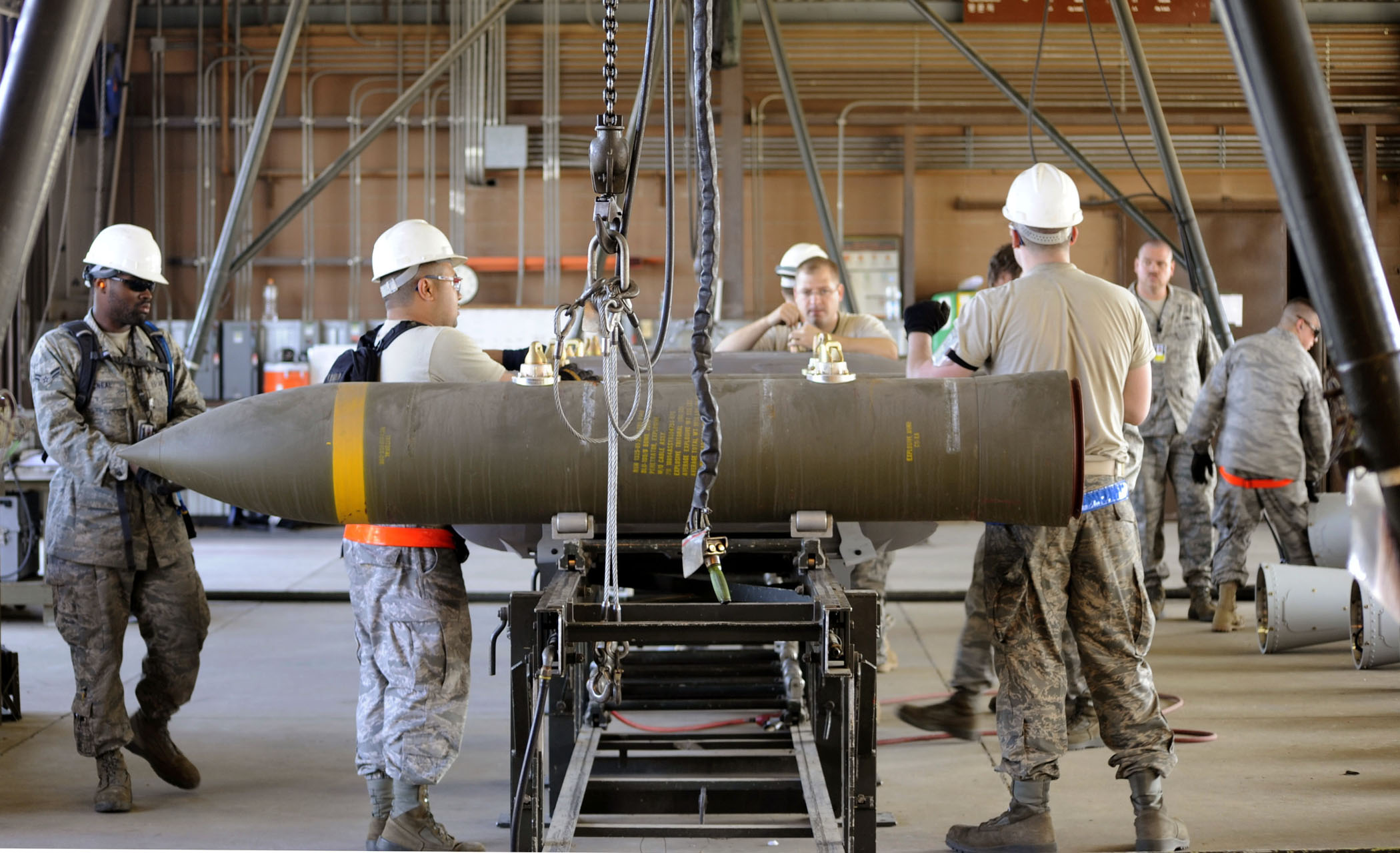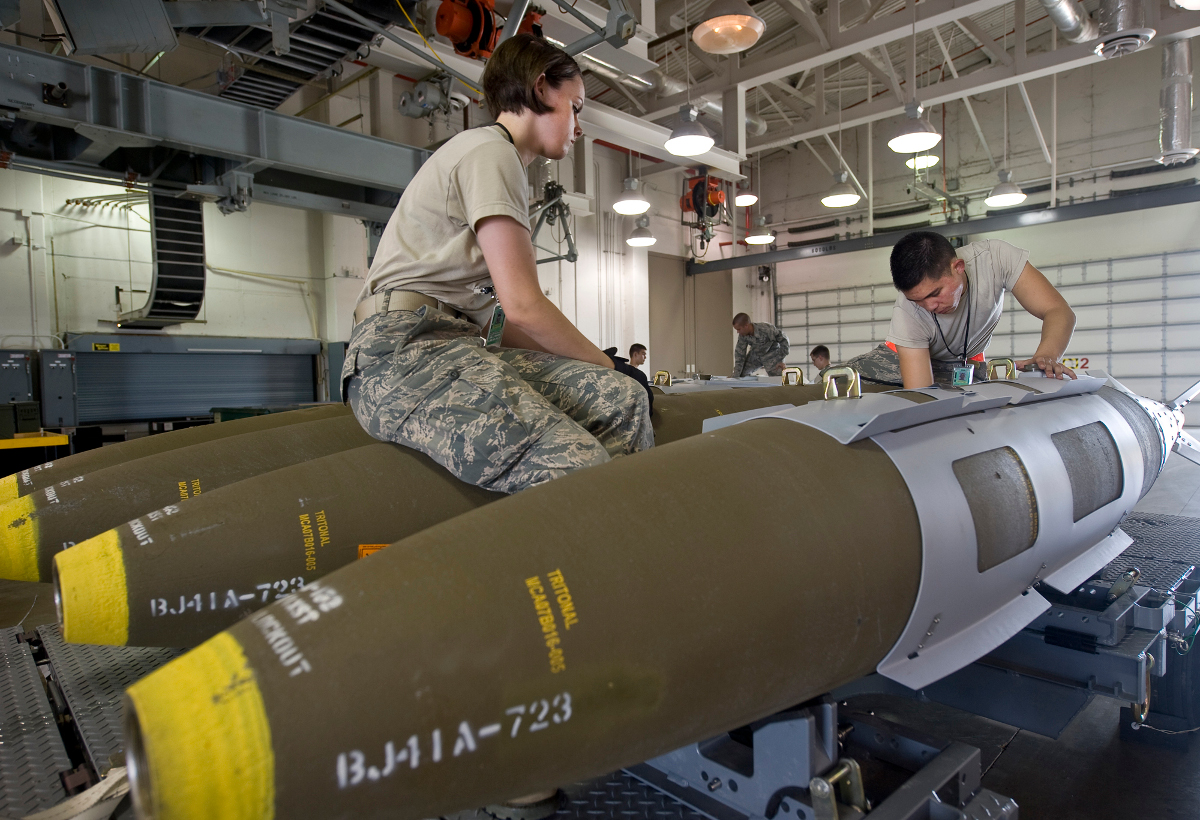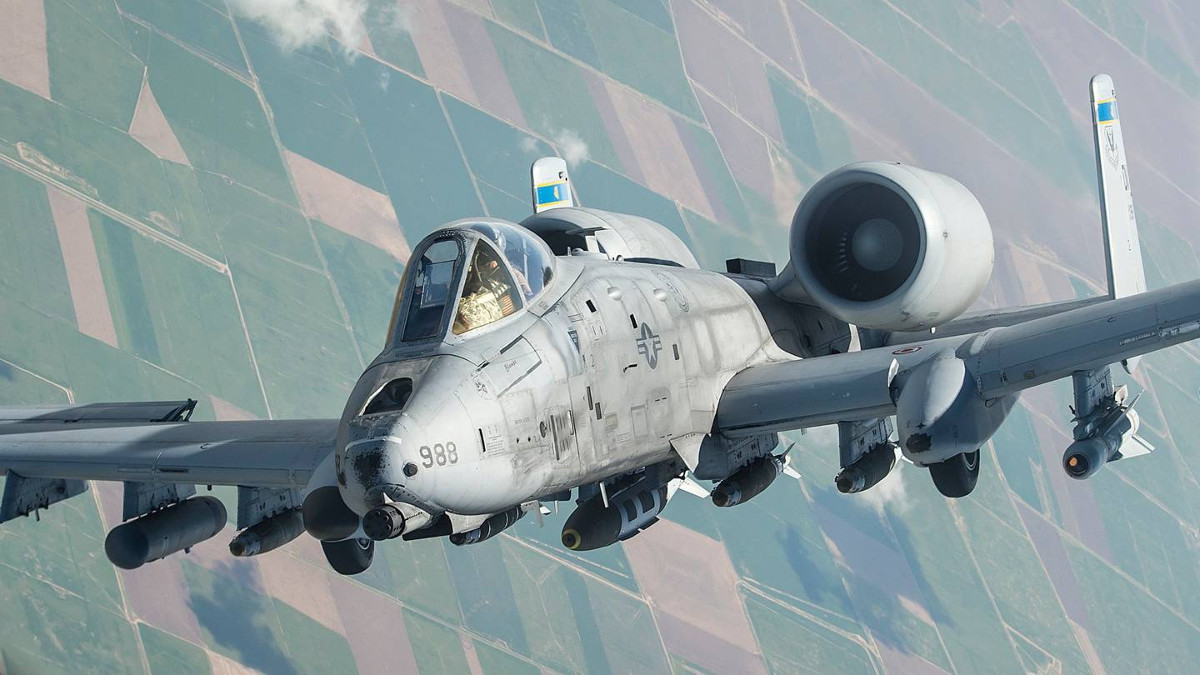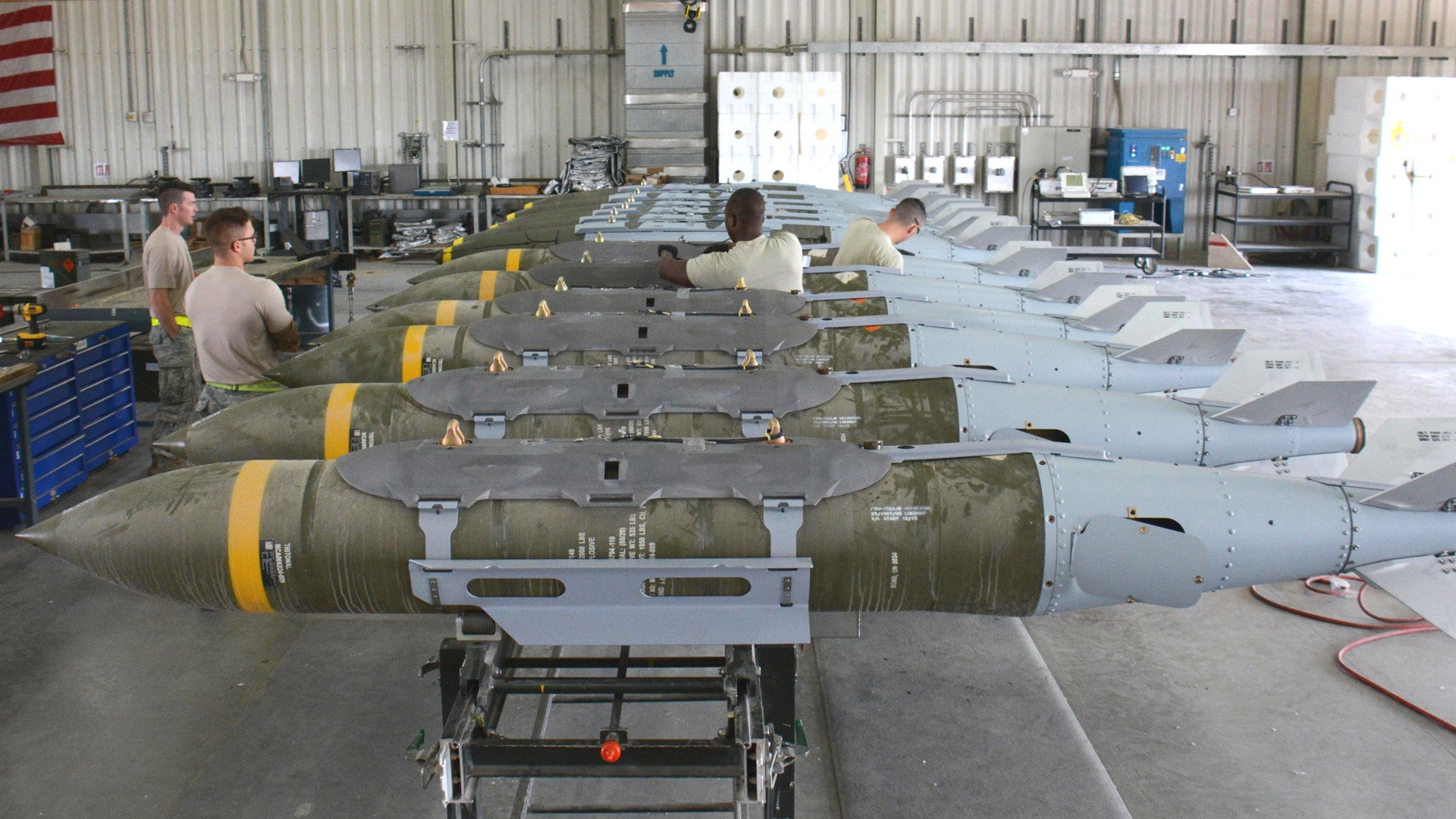The U.S. Air Force is moving ahead with plans to buy new 2,000-pound class bunker buster bombs, built around an improved warhead called the BLU-137/B. This type will ultimately replace existing weapons in this category, which have already been a key part of the fight against ISIS.
On June 22, 2017, the Air Force Life Cycle Management Center issued a formal request for proposals looking for vendors who are interested in building an initial limited run of 1,000 munitions, plus four additional full production lots of 1,000 bombs each. The service had first released a draft version of the contract in December 2016.
“The [U.S.] Government has a requirement to replace the BLU-109/B and BLU-109C/B with the BLU-137/B penetrator warhead to obtain necessary improvements to capability and survivability of the 2,000lb class penetrator,” according to the solicitation’s statement of work. “Foreign participation is not authorized,” the notice on FedBizOpps, the U.S. federal government’s main contracting website adds.
In development since at least 2015, there aren’t a lot of details about the BLU-137/B or its features. However, the Air Force’s 2018 fiscal year budget request did add one important piece of information: “The BLU-137 will increase fuze survivability when used against bunkers, aircraft shelters, and reinforced targets.” In short, this new model will more reliability explode after punching through its target.

The proposed budget also noted that, at present, the BLU-137/B will only work with a modified Joint Direct Attack Munition (JDAM) GPS guidance kit including a new tail assembly with an Arming Generator Relocator Adaptor (AGRA). This new rear portion costs more than a traditional JDAM tail assembly for 2,000 pound class bombs, but helps ensure the fuze functions and the weapon detonates properly, likely by moving the power source away from the impact point. The BLU-109/B series works with both the Paveway-series laser guidance and the JDAM kits. On March 30, 2017, the Air Force announced it had hired Boeing to design this new tail version specifically for the improved penetrator. The initial contract was worth up to $7,367,000 for work on at least 1,000 tail units.

All JDAM bombs with 2,000 pound class warheads of any type are known as GBU-31/Bs, with different warheads indicated by subvariant nomenclatures. For example, the GBU-31(V)3/B contains the BLU-109/B. We do not know what the specific GBU-31/B designation is when armament teams build the full bomb with the new BLU-137/B.
We don’t know for sure that this is the only upgrade over the older BLU-109s, which has been in service since the 1990s, either. All of these existing 2,000 penetrators have a one inch hardened steel shell. The standard BLU-109/B has approximately 530 pounds of explosive packed inside and can break through four to six feet of reinforced concrete. The BLU-109C/B substitutes the older Tritonal explosive filler for the insensitive AFX-757, a specialized Air Force blend that is less likely to accidentally explode.

In addition, according to the Air Force’s budget proposal for the 2017 fiscal year, the weapon was the result of a project known as the Advanced 2000 Pound Warhead, or A2K. That program’s requirements called for a bomb body that retained the same basic dimensions as the older BLU-109/B series. A further goal was to provide the improved features without dramatically changing the weapon’s overall mass. Keeping the dimensions and weights roughly the same would reduce or eliminate the need for additional modifications to aircraft or ground bombing handling equipment, or the purchase of all new systems, in order to use the bombs.
It’s also not clear whether or not the new tail is a dramatic enough to impact how pilots will employ the weapon or if ground crews will have to go about loading them up onto aircraft any differently. The A2K requirements said the final weapon had to be able to at least work with both the F-15E Strike Eagle multi-role jet and B-2 Spirit stealth bomber.

Given the Air Force’s recent experience battling ISIS in Iraq and Syria, it’s very likely that they would want to quickly give other aircraft the ability to carry JDAMs with these new warheads. After the aerial campaign started in 2014, GBU-31/Bs with both standard 2,000 pound warheads and the BLU-109/B penetrators quickly became essential as the U.S. military as a whole began targeting terrorist-controlled tunnel networks and other infrastructure, including command centers inside of large buildings and oil extraction and processing facilities.
As the U.S.-led coalition stepped up its bombing campaign, ISIS increasingly turned to tunnels to avoid detection and simply shelter from the bombardment. In Iraq, “Daesh continue[s] using extensive tunnel networks … as a means to avoid detection before conducting harassing attacks,” a declassified U.S. Air Force intelligence summary from July 2016, which the author obtained via the Freedom of Information Act, explained, using another common term for ISIS. In Syria, “Daesh effective use of tunnel networks … hinders effective coalition targeting,” another section of the same report noted.

The BLU-109/B was be a good way to get at those buried pathways and supply caches. By burrowing into specific targets, above and below ground, the bombs could potentially contain much of their blast effects closer to the point of impact, reducing the danger of collateral damage, too. This would have been a particularly important consideration in missions over densely populated cities like Ramadi and Mosul. So, it’s no surprise that official photographs have shown F-15Es, B-52 Stratofortress heavy bombers, and even A-10 Warthog ground attack aircraft carrying GBU-31/Bs. The GBU-31/B has been a regular part of the B-52’s load out in particular since the aircraft first arrived in theater to fight ISIS in 2016.
There was no mention in the June 2017 contract announcement about whether the U.S. Navy, which has used the BLU-109A/B and BLU-109B/B in past, has expressed an interest in obtaining these new munitions. Both of these versions use another insensitive explosive, PBXN-109. In its own strikes against ISIS, the service has generally employed smaller 500- and 1,000-pound class bombs. Separately, the Air Force is also working on a replacement for the larger 4,500-pound class BLU-113/B bunker buster, too. This Advanced 5000 Pound Warhead, or A5K, does not appear to have a formal nomenclature yet.
The Air Force expects to start replacing the BLU-109C/B first with the BLU-137/B beginning in either 2017 or 2018. In the meantime, you can expect to see Air Force aircraft continue dropping existing GBU-31/Bs on ISIS targets in Iraq and Syria.
Contact the author: joe@thedrive.com
